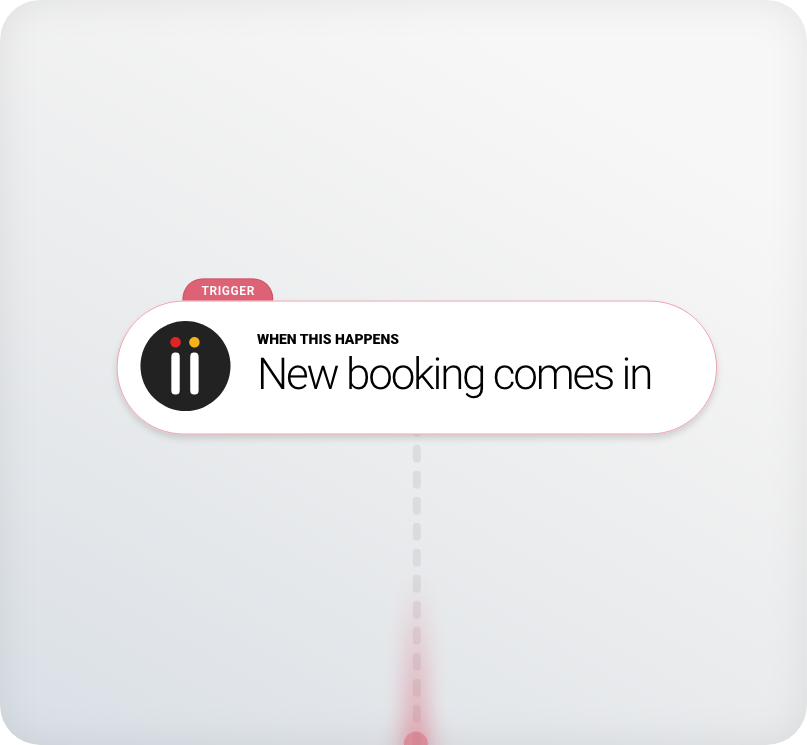How it works
Below are examples of three you can create from the thousands
of possibilities available to you.
Let’s start with a 
that solves the problem of
growing your marketing database…
Begin by . . .
setting a trigger that starts your Zap.
For example, your trigger could be a
new booking coming in.



Next . . .
set the trigger to perform an action.
In this example, the action could be to add the contact associated with the new booking to your marketing database, whether that be in a spreadsheet or in a CRM (Customer Relationship Management) system like HubSpot.

And finally . . . do nothing
You’ve created your first Zap. From now on, all new contacts will automatically be added to your
marketing database, making it easier for you to send them promotions.

Here’s another example of a  you can create
you can create
this time, to help you save time managing
maintenance tasks.

Begin by . . .
creating a trigger.
Here, the trigger is that a maintenance event is added to the cleaning dashboard.

Next . . .
set the trigger to perform an action.
In this example, the action is to send a request via Asana that the maintenance team repair the break in the room.



And finally . . . do nothing
Your new Zap is all set. From now on, whenever there’s a new maintenance task, your team will automatically be notified to start the repair in Asana.
Plus, you’ll be able to track their progress every step of the way when you log in to Asana.
Here’s one final example.
Let’s look at a that will allow you to build your
newsletter mailing list without lifting a finger.
Begin by . . .
creating a trigger.
Here, the trigger is that the guest has checked out.



Next . . .
set the trigger to perform an action.
In this instance, you want to configure Mailchimp to subscribe the checked-out guest to your chosen mailing list.

And finally . . . do nothing
Your new Mailchimp Zap is set up.
From now on, you can keep each former guest interested in your accommodation with regular updates via your newsletter.


Full access to FREE OPEN APIs
